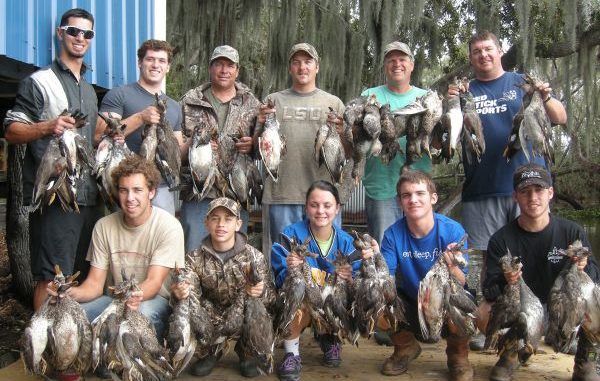
Habitat loss a concern for all hunters
No one who really knows me would accuse me of being a die-hard duck hunter. While I’ve spent a lot of time over the years pointing a shotgun at waterfowl (“pointing” being the operative term), what has traditionally gotten my hunting juices flowing has been the thought of climbing into a tree and having a deer — any deer — walk into range.
But some of my fondest memories are of duck hunts shared with former Louisiana Sportsman editor Todd Masson, squatting in patches of vegetation at the mouth of the Mississippi River and watching birds cup into our small set of dekes.
For those like my boss, who would miss their wedding anniversary to be in the blind on opening morning, duck hunting is a passion approaching insanity. Those guys watch annual waterfowl counts closer than an accountant watches his company’s books.
And there is reason to be encouraged lately. The number of ducks in the northern breeding grounds has swelled for pretty much all species. However, while the number of mallards, gadwalls, teal and shovelers have increased, a continued decline in the population of pintails points to a long-term concern.
The culprit, according to a report by the U.S. Committee of the North American Bird Conservation Initiative, is the loss of temporary wetlands in the prairies of the United States and Canada. See the story on page 27 for more details.
In fact, the initiative’s report concludes that 74,340 acres of these so-called “ephemeral” wetlands have been lost between 1997 and 2009 — and that’s only in the United States.
Those lands are being lost to urban sprawl and reclaimed for use in agricultural operations as Conservation Reservation Program contracts have expired.
So what, right? Other species are doing well, right?
DU last month acknowledged that is the case, but they also pointed out that even the growth in species like mallards and grey ducks could be illusory, being based mostly on above-average rainfall over the past 20 years in key breeding areas.
Biologists worry that the abundance of water is “masking the loss of wetland habitats documented by other studies.”
If we in Louisiana know nothing else it’s this: The weather is sure to change, shifting from wet to dry and back to wet again. So what will happen when the climatic cycle up north shifts again and breeding areas stop flooding?
That’s the central question of waterfowl conservation.
If, as some studies show, habitat is being lost to farming and urban development, the future is less bright than we would assume based on today’s waterfowl numbers.
That makes organizations like DU all the more important — even for those of us who are just occassional duck hunters.


